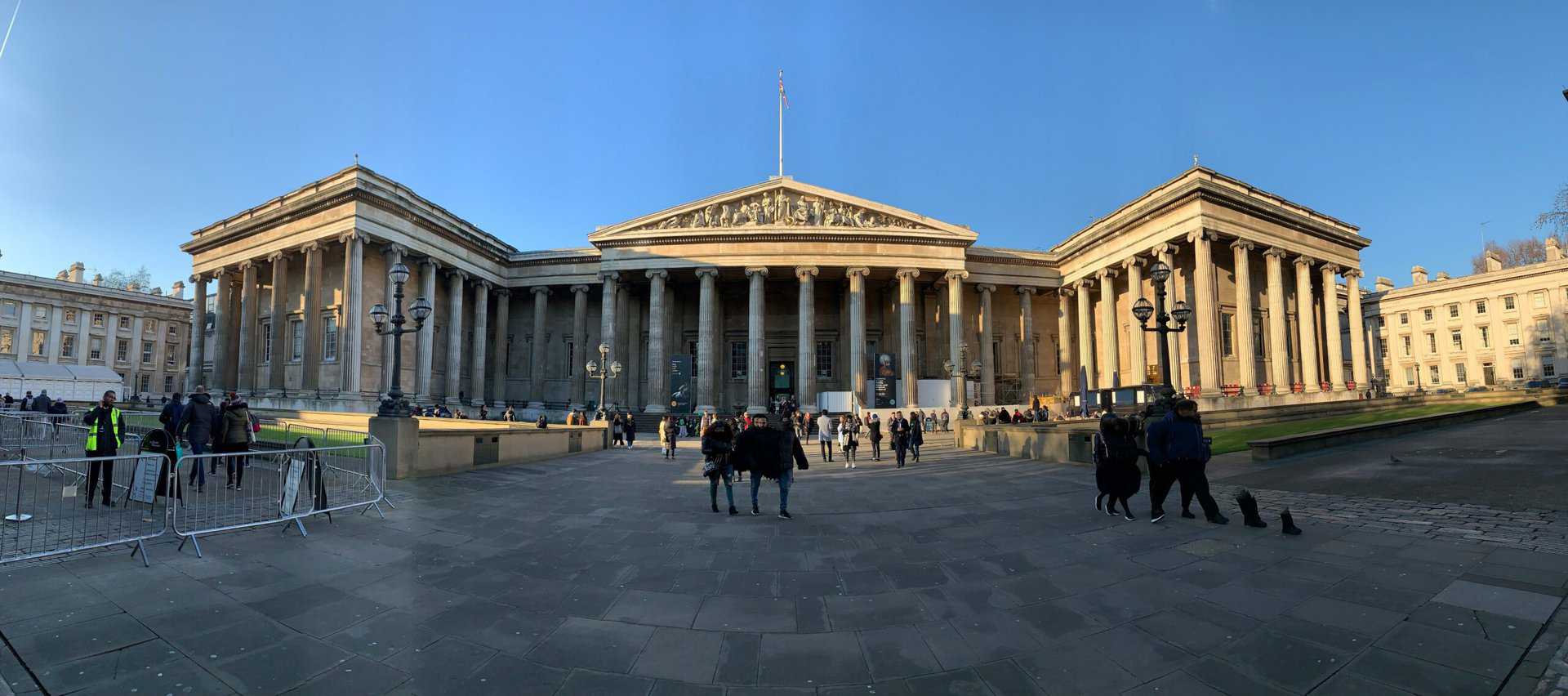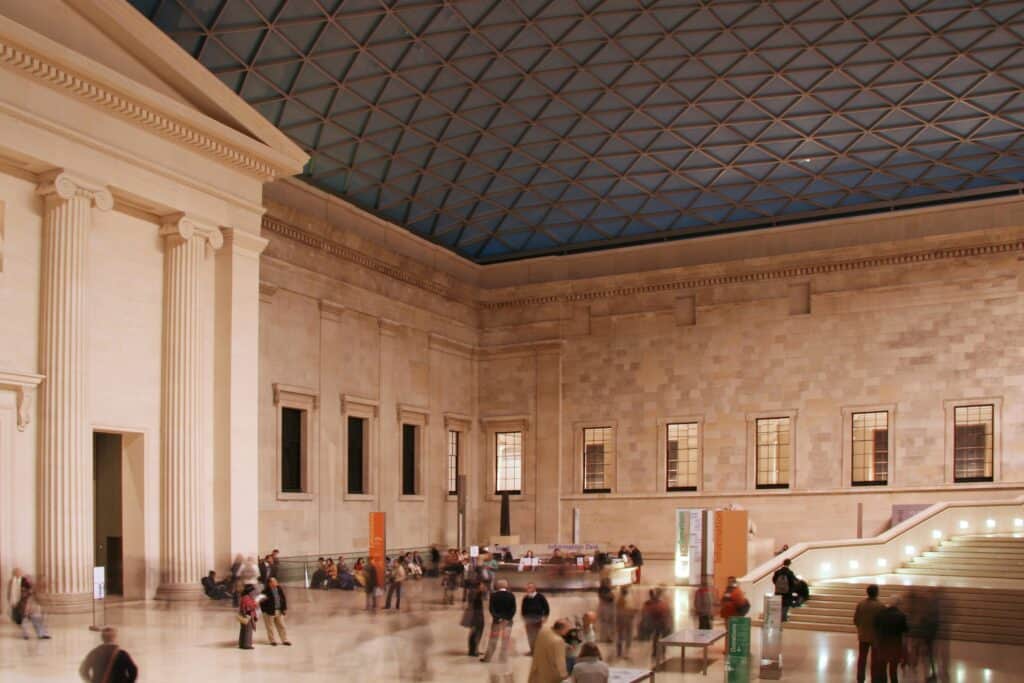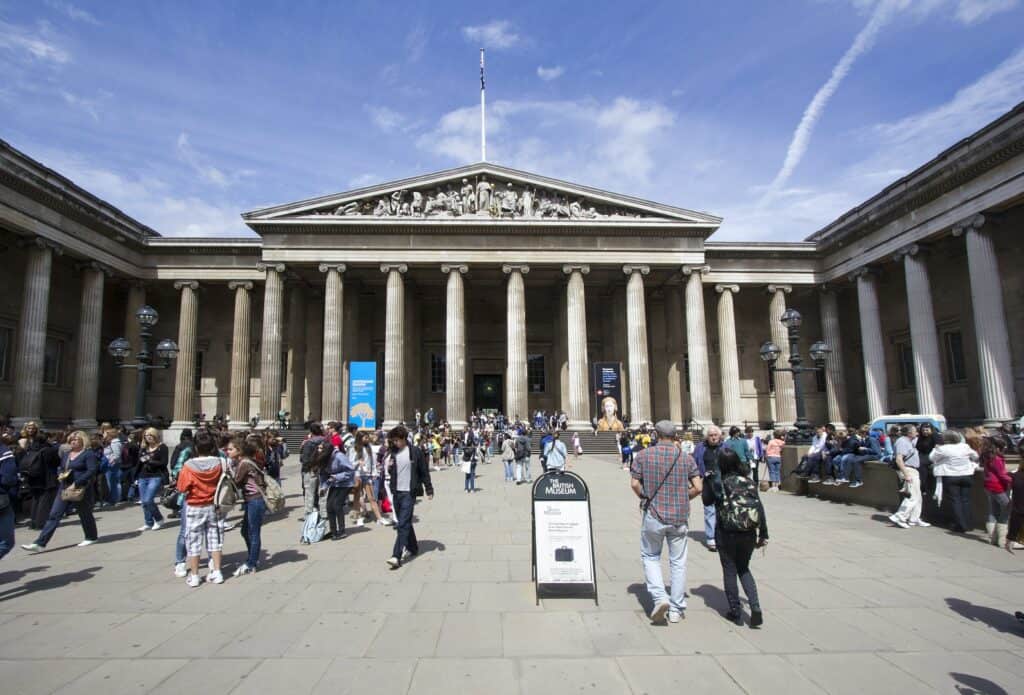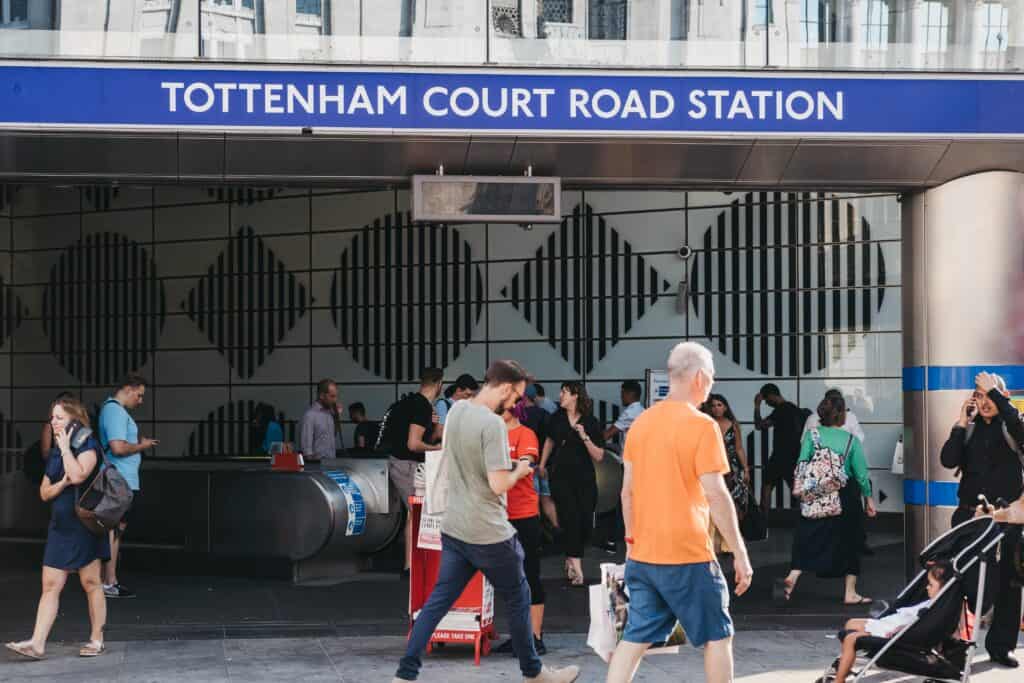How to Spend a Fantastic Day at the British Museum: Your Frequently Asked Questions Answered

Updated On: April 23, 2024 by Noha Basiouny
A global city such as London can never run out of attractions to meet your expectations, satisfy your taste and generally provide you with a never-to-forget travel experience. Whether you are a history enthusiast, an art advocate, a music fan or a food lover, all you need to do is make a list of your preferences, and the Swinging City will satisfy them.
In that context, there are certain places one must never miss visiting when in town, for they make the bases of the London experience. No one can visit Egypt without seeing the Pyramids and eating beans, falafel, and koshary. Likewise, it would be a pity if you went all the way to London without visiting its most famous attractions.

You can take a grand look at London by riding the London Eye, whose single rotation takes 30 minutes, by the way. You can visit Buckingham Palace and pay tribute to Princess Diana and the Queen, explore Big Ben by ascending—and descending—its magical spiral 334-step staircase, enjoy a late afternoon hike in the spectacular Hyde Park and dive into human history and world culture by touring the iconic British Museum, which is precisely what we are addressing today.
As we especially care about you having the best travel experience, in this article, we are demonstrating what you will need to learn about and plan your visit to the British Museum. And to fit this in the most British context possible, try reading this article when your local time matches 5:00 pm in London while consuming a cup of Earl Grey Tea and snacking on some freshly baked biscuits.
Here are your frequently asked questions about the British Museum answered.
1. What is the British Museum? Why was it established?
The British Museum is the most prominent institution in London and the entire United Kingdom and one of the oldest and most spectacular public museums in the whole world. It hosts a vast collection of nearly eight million items belonging to all areas of knowledge and every corner of the globe.
The establishment of the British Museum goes as far back as 1753, and it took nearly six years before it was opened to the public in 1759. Given that the Declaration of Independence was signed in 1776, the British Museum is officially older than the United States of America!
That said, the story of this museum coming into existence is quite interesting. Just like how the Universe reportedly started with the explosion and subsequent yet eternal expansion of a teeny-tiny speck of energy, the British Museum also started relatively small and has been developing ever since.

It all began as a little initiative by Irish doctor and scientist Sir Hans Sloane. He had an extensive collection of 71,000 objects, featuring thousands of printed books, scripts, and illustrations, numerous specimens, dried plants and antiques from Greece, Rome, Egypt, and even the Americas and the Far East—this region comprises eastern, northern, and Southeast Asia.
Sloane was concerned his precious collection, which he had spent his entire life acquiring and caring for, would be lost after his death. So he left it to the British nation for £20,000 to be given to his heirs after he passed away, and from here came the idea of establishing the British Museum to host this valuable collection.
For over two centuries and a half, the British Museum underwent significant development, expansion, and renovation. The collection, too, grew from some thousand items to a total of eight million artefacts brought either through purchase, donations, or bequeathments from all corners of the empire on which the Sun did not set for a long time.
As of today, the British Museum, located on the Great Russell Street in the Bloomsbury district in London, is a top tourist attraction in the UK and one of the best and largest museums in the world.
2. What is the difference between the British Museum and the Louvre Museum?
Although many love to view both museums as rivals, there is a distinct difference between the British Museum of London and the Louvre Museum in Paris and that is their primary focus.
The British Museum is mainly dedicated to human history and culture and partially to international art. Its collection, for the most part, represents the development of mankind ever since the early settlement to the present time. There, artefacts may range from ancient statues, sculptures, and stones to jewellery, money, metals, watches, books, scripts, drawings, and a huge collection of specimens.
On the other hand, the Louvre Museum is initially concerned with art. It has a large collection of artworks best represented by paintings, drawings, antiques, prints, pottery, and furniture.
In addition, the British Museum is way larger than its French rival, covering an area of more than 75,000 square metres excluding the internal and external storage rooms. In comparison, the Louvre is 60,600 square metres big and has a collection of 380,000 items.
3. What is the British Museum like?
The current British Museum building standing in the heart of London was designed by British architect Sir Robert Smirke in 1823 using a Greek Revival architectural style that somewhat matches the majesty of the exhibits the museum hosts.
The building is a quadrangle with four wings and a courtyard. The South entrance found on Great Russell Street features 44 14-metre-tall ancient Greek columns made in the ionic order and placed in three different groups. A pediment was added above the middle columns.
The tympanum, which is the triangular space in the pediment, contains multiple sculptures that reportedly represent the Progress of Civilisation, made by British sculptor Sir Richard Westmacott.
The museum covers an area of over 75,000 square metres. It has three floors, ground, lower, and upper, with each floor further divided into several levels. All in all, there are about 94 galleries in the museum displaying around 80,000 items at any given moment. That is only 1% of the entire eight-million-item collection. Yet, all the exhibits on display feature the most critical items, which we will cover in a bit.
The museum also has a shop, restaurant, pizzeria and several cafes, as well as a centre for education and another for young visitors.
The Reading Room
The early structure of the British Museum had a library which hosted a large collection of books, documents, and prints. When the collection grew bigger, a need for a reading room emerged.
Suggested by the Keeper of Printed Books at the time, Antonio Panizz, and designed by
British architect Sydney Smirke, a new round reading room was constructed in the middle of the courtyard in only three years.
This Round Reading Room, in and of itself, is an outstanding architectural masterpiece. It has a diameter of 42.6 metres and features a vast, beautifully designed dome. Around the internal walls of the room, iron bookstacks were built to store books, altogether making 40 kilometres of shelves.
The Round Reading Room was opened in 1857 yet was only accessible by registered researchers and not the public. Some notable public figures who used the Reading Room include Oscar Wilde, Virginia Woolf, George Orwell, Mahatma Gandhi, Mark Twain, Arthur Conan Doyle, Karl Marx and Vladimir Lenin.
In 1997, the British Library was moved from the museum to a different building, and thus, the massive bookstacks, as well as the books, were removed, which, in turn, demanded the redevelopment of the Reading Room.
The Great Court
“If we are about to renovate the Reading Room, why do we not develop the entire courtyard as well and open both to the public?” One of the museum officials must have wondered.
An architecture competition was launched in the late 1990s, and over 130 designs were submitted. Eventually, Foster and Partners won the right to redesign the entire courtyard of the British Museum. So they came up with the idea of covering it with a glass and steel roof and called it the Great Court.
The construction was completed in late 1999, and the Great Court, with an area of 8,093 square metres, was officially opened by Queen Elizabeth II on 6 September 2000.
Making the Great Court, as well as the Reading Room, accessible by the public increased the number of the museum visitors dramatically.
4. What makes the British Museum so special?
Besides everything we just mentioned, what really makes the British Museum unique is basically its tremendously diverse and super large collection. These eight million items track the development of humanity from prehistoric to present times. They display artefacts from the most groundbreaking ancient civilisations.
For instance, the Egyptian collection, one of the largest ones at the museum, features figures, statues, sculptures, mummies, and many other differently-sized artefacts from ancient Egypt. In addition, there are exhibits from ancient Greece, China, India, Korea, Japan, Persia, the Middle East, Anatolia, the Levant, the Americas, and Medieval Europe.
There is a gallery especially dedicated to Alexander the Great and another for the Roman Empire. There are even artefacts from North Korea!
Such a great collection made the British Museum a remarkable attraction in the United Kingdom. In 2022 alone, it received over four million visitors and ranked fourth among the most visited museums in the world that year.
Interestingly, the administration of the British Museum, in order to promote culture and history, loans parts of its gigantic collection, basically thousands of items, to other venues in the UK and overseas for display purposes. In 2015 and 2016, for instance, more than 5,000 items were lent to international galleries and museums.
5. What are some remarkable items to look for at the British Museum?
Out of the 80,000 items found on display at the museum, certain exhibits seem to be highlights of the entire collection, some of the most important artefacts in history. Let’s explore some of those.
The Rosetta Stone
One item to first and foremost look for at the British Museum is the Rosetta Stone. If you are not sure what that is, let me tell you that it was the key to deciphering the hieroglyphics and understanding the ancient Egyptian civilisation.
The Rosetta Stone found at the museum was made of a single black rock called granodiorite, dating back to 196 BC. It is 1.14 metres tall, 72 centimetres wide, and 27 centimetres thick, and carved on it is the exact same text but in three distinct writing systems, hieroglyphic, demotic and ancient Greek, in that order from top to bottom.
The Rosetta Stone was discovered totally by coincidence during the French Campaign in Egypt in 1799, which started a year earlier. When the British, united with the Ottoman Empire, which controlled Egypt at the time, defeated the French and forced them out in 1801, the British took the Rosetta Stone and sent it to the British Museum in London, where it has been on display ever since.
The Elgin Marbles
The Elgin Marbles are a collection of Greek sculptures that once belonged to the Parthenon and the old citadel in the Acropolis of Athens. They were brought to the UK by the soldiers of the 7th Earl of Elgin, Thomas Bruce, who was the British ambassador to the Ottoman Empire, which dominated Greece during the early 19th century.
The marble sculptures now residing at the British Museum are 75 metres long and date back to 447 BC. The sculptures include friezes, metopes and pediments featuring statue plaques and showing scenes from Greek mythology.
Other masterpieces hosted by the British Museum include a Samurai armour, a colossal granite head of the Pharaoh Amenhotep III, Ramesses II’s granite bust, a gigantic moai statue brought directly from Easter Island, the Achaemenid Oxus treasure and its 180 golden and silver pieces, the ancient Greek Sophilos Vase, the Italian 2.7-metre Piranesi vase, the Kayung Totem Pole, and the Tree of Life.
6. What else can one do at the British Museum?
Besides the galleries, Reading Room, Great Court, education centre, and the various cafes and restaurants, the British Museum hosts different exhibitions, little lectures, and other special events all revolving around culture and history. Such occasions are organised almost on a regular basis, and their details, including their schedule and hosting venues, are available on the museum’s website.
For instance, the Luxury and Power: Persia to Greece exhibition is currently hosted at the British Museum and will be available until 13 August 2023. Another exhibition about China’s hidden century is also open until 8 October 2023.
Some of these exhibitions may be free of charge, but others are paid and require booking tickets beforehand. All exhibitions and events highlight the sides of the different world cultures.
The museum also provides guided tours, such as the famous ‘Around the World in 90 Minutes’ and ‘Spotlight: The Round Reading Room’ tours.
7. What are the British Museum’s opening times?
The museum is open on a daily basis from 10:00 am to 5:00 pm local time and up to 8:30 pm on Fridays, with the last entry being at 4:00 pm and 7:30 pm, respectively. During the Holidays, the museum is closed on 24, 25 and 26 December. Any changes to the opening hours are always announced on the museum’s website.
Galleries are usually cleared 10 minutes before their closure. Shops and cafes are open every day from 10:00 am to 5:00 pm. The Great Court Restaurant is open daily from 11:30 am to 5:00 pm, while the pizzeria serves visitors from 12:00 pm to 3:00 pm.
8. Do I need to book my ticket beforehand?
Admission to the British Museum is free; however, visitors would better book their tickets online before they show up at the entrance.
Since the museum welcomes a large number of visitors every day and to help control, organise, provide them with a beautiful museum experience and give them enough time to explore the exhibits, every visitor should book their online ticket by choosing a specific time slot on the day of their visit.
To enter the museum exactly at the allocated time slot, visitors should also arrive a little earlier. Admission is not always guaranteed in case of late arrival.
9. How can I get to the museum?

Located at Bloomsbury, London’s lavish residential area and its cultural and intellectual capital, the British Museum is quite reachable. Using the London Underground, one can get off at the Holborn Station or Tottenham Court Road Station and just walk either for five or two minutes to get to the museum. The Russell Square and Goodge Street stations are also nearby and a few-minutes’ walk to the museum.
If you are coming from outside London, the nearest train station to the museum is the London Euston, only a 14-minute walk.
The British Museum is one of the most fantastic tourist attractions one must never miss visiting while in town. If you consider travelling to the Cloud City anytime soon, make sure you check our other story on the top things to do in London to plan the best trip ever.






